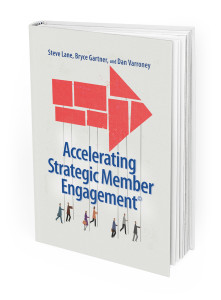Communication Strategies Drive Growth
As Associations evaluate new paths to member engagement, conference attendance and revenue growth, Communication Strategies must be on the table. Many agree that driving association messaging is especially challenging. After all, the complexities of today’s news cycle clogs Social and Traditional Media lanes like a Long Island Expressway rush hour. While no one admits to beating the rush hour, some Practitioners have a path to incorporate Communication strategies into an overall Association member engagement and growth strategy.
At a time when Association dollars require ROI, having the right Comms Strategies can improve competitive position, strengthen market positioning and drive revenue growth.
Navigating the complex nature of the media landscape is both art and science for Associations. For Bill Haynes, Founder and President of Boston based BackBay Communications, a focused and well thought out communication strategies approach is a game changer for Associations.
As a two decade plus veteran of numerous media campaigns, Haynes decided to put a flag in the marketplace, starting his firm in June of 2005, a strategic branding, marketing and public relations firm focused on the financial services sector. Haynes saw a future defining companies and Associations as practical solutions to achieve business growth. A track record defined by client satisfaction and business growth expanded BackBay from Boston to New York and London.
3 Step Content Foundation
Associations can move the needle forward, engage their members, grow conference attendance and increase membership using BackBay’s content driven formula.
Is there a starting point? “Yes,” says Haynes, “Associations have a great opportunity to develop original content that leverages and broadcasts the association’s expertise in the marketplace, offering actionable insights to members, prospects and partners.”
3 Communication Strategies Drive Member Engagement and Growth
- Identify unique differentiators. An association’s brand identity, marketing collateral and website should reflect the uniqueness for the association’s brand and underscore the expertise and resources it provides its members.
- Develop proprietary branded data. Membership surveys focused on marketplace trends and issues and offering predictions for the near future are very attractive to the media and to the membership base. These survey can be co-branded with media partners or universities, or even member organizations as part of a sponsorship package. Insightful data can be utilized in multiple ways, such as media interviews, bylined articles, white papers, webinars, conferences, newsletters and videos. All of these activities reinforce brand value with current and potential members, board members and sponsors. They also help elected officials recognize the industry’s value in the marketplace.
- Build strategic alliances. Associations can magnify their insights and clout through strategic communications alliances with other organizations with strong brands, such as universities, companies, stock exchanges, media outlets and data providers. These alliances add credibility and can significantly boost distribution of your news, insights, brand name and value proposition.
These 3 steps “should be reinforced year-around with timely topical content,” says Haynes, with media pitches to key publications and submission of Association authored articles on relevant topics.
Put to the Test
Hired by a finance Association to boost annual conference attendance in the height of the Great Recession, BackBay Communications was tasked with elevating awareness, attracting attendance and sponsorship. Haynes and his team developed and executed an integrated marketing campaign including print and online advertising, direct mail, email, event marketing, affiliate marketing, website content, video and media relations.
The Conference regardless of the tough economic times, achieved the second highest attendance ever. In reflection, Haynes sees inclusion of his Firm’s 3 Communication Strategies are integral to success.
Communication Strategies Drive Growth
Developing unique differentiators, creating proprietary branded data to share with the media, and building strategic alliances are three strategies that move the member engagement and growth needle for associations.
While Haynes doesn’t see his firm’s strategies as the solution to traffic congestion on New York’s legendary Long Island Expressway, he does agree that the right Communication Strategies drive membership, sponsorship and conference growth.
For a free copy of the “Accelerating Strategic Member Engagement” eBook, request your copy at www.potomaccore.com.






